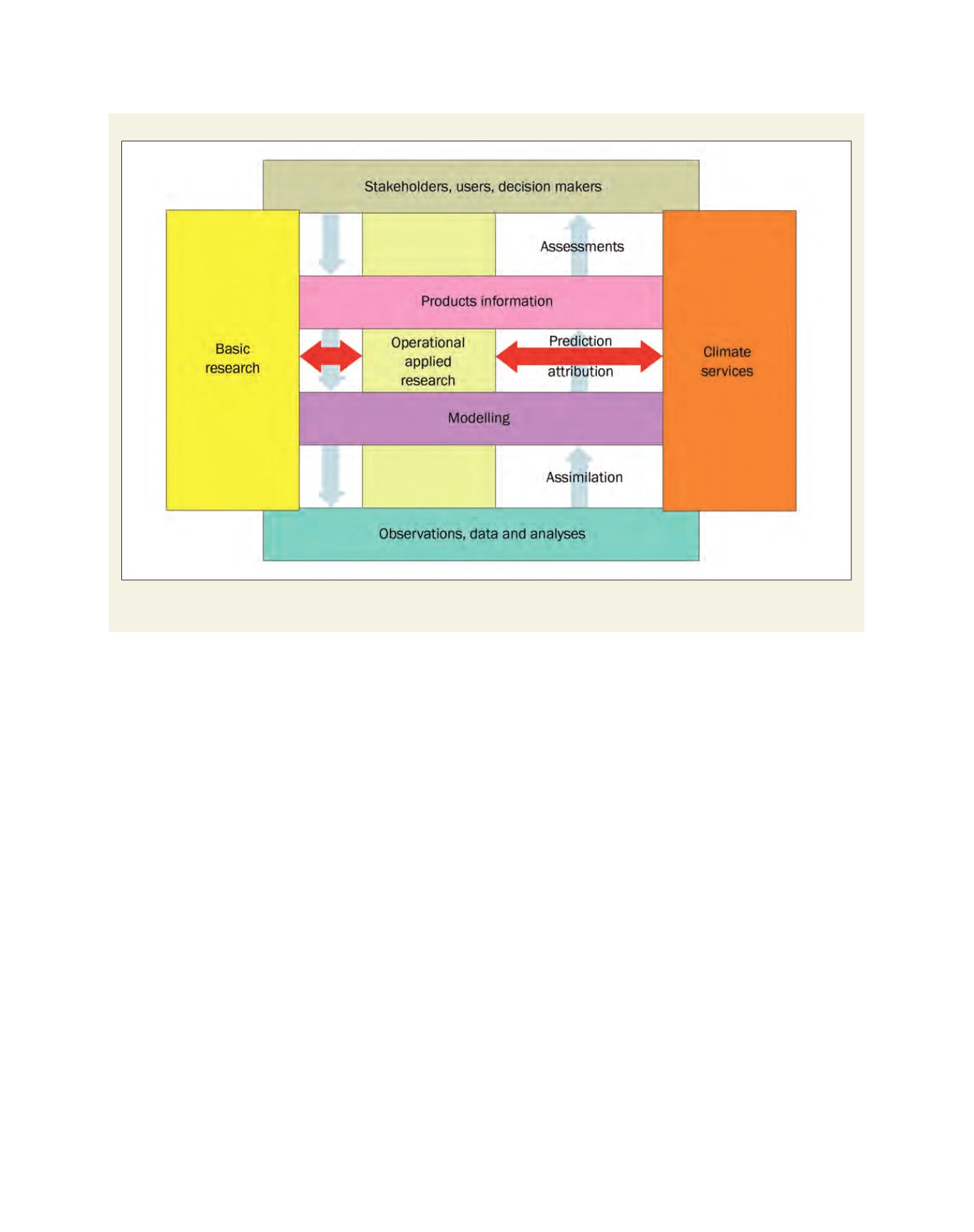

Source: Keven Trenberth, modified by Ghassem Asrar
[
] 178
O
bserving
, P
redicting
and
P
rOjecting
c
limate
c
OnditiOns
decades; tailored forecasts for regions and localities; inte-
gration of atmospheric, oceanic, terrestrial and social data
into a comprehensive Earth System prediction model;
and decision-support interfaces that can be adjusted to
provide user-specified ‘if-then’ scenarios. The realization of
a climate information system will require the coupling of
models across the physical climate system, biogeochemical
cycles and socioeconomic systems. Furthermore, it will
require the synthesis of disparate datasets from in situ
and space-based observations, new terrestrial and orbital
sensor systems, dedicated high performance computer
infrastructure and software. Ultimately such a system
requires an unprecedented synergy between the climate
research community, the operational delivery arm of
climate services and the end users.
Much akin to the situation 60 years ago with the advent
of numerical weather prediction, we now find ourselves
in a new era of climate information and services. This era
is underpinned by climate research aimed at improving,
expanding, and refining our understanding and ability
to predict the climate system on seasonal, decadal and
longer timescales. Investing in such a system is the best
way to insure that our generation, our children and those
who follow them have the ability to manage the risks and
realize the opportunities associated with climate variability
and change.
the consequences of potential climate variability and change on major
economic sectors – such as food, water, energy and health – for their
country or geographic region. The WCRP’s accomplishments and
progress were all made possible by the generous and sustained contri-
butions of its sponsors: WMO, ICSU and IOC, and their network of
more than 190 Member countries.
The research coordinated by the WCRP has established unequivo-
cally that the Earth System will experience real climate change over
the next 50 years, exceeding the scope of natural climate variability.
A question of paramount importance confronting nations is how to
adapt to this certainty of climate variability and change in the next half
century. In response, the upcoming World Climate Conference-3 will
consider how comprehensive climate services can best inform decisions
on adaptation.
The delivery of climate observations, information and services
involves the transition across basic research, applied research, opera-
tions, applications and engagement with the user community. Yet most
of the effort to date has been focused on observing and understanding
the climate system and not products and services. Furthermore, climate
impacts assessment and provision of services involve sectors such as
business, finance, agriculture, engineering, public health, public policy
and national security.
In order to satisfy the needs of society for climate services, a climate
information system is required to aid decision makers in policy, infra-
structure development and investment decisions. Such a systemwould
be based on: reliable climate predictions over timescales of seasons to
The Climate Information System
The vertical flows depict the basic activities starting from: the observations and their use and development into products; attribution and prediction; assessments; and
interactions with stakeholders and users to accommodate their needs as best possible. The WCRP is engaged in all but the delivery of climate services
















